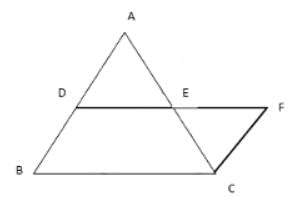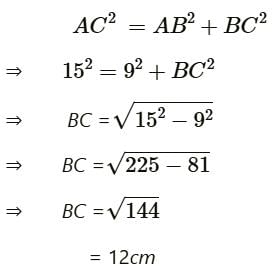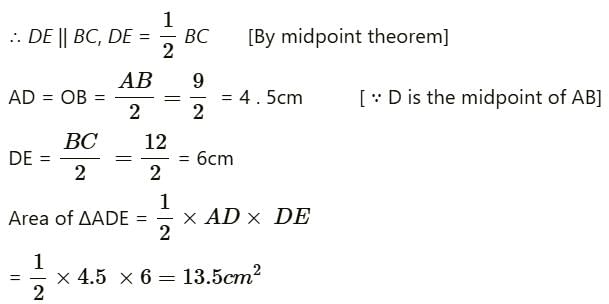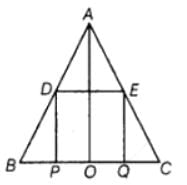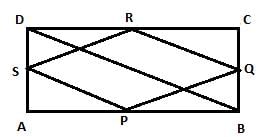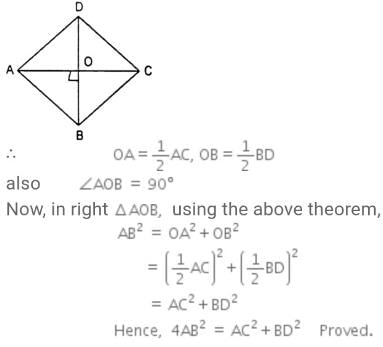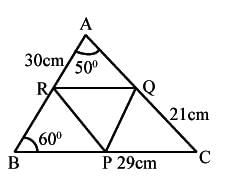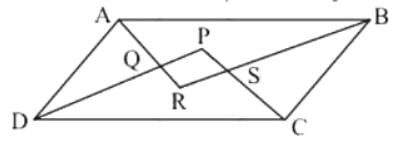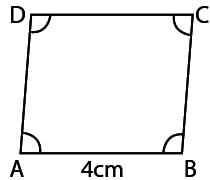Test: Quadrilaterals- 2 - CTET & State TET MCQ
25 Questions MCQ Test - Test: Quadrilaterals- 2
Two parallelogram stand on equal bases and between the same parallels. The ratio of their areas is
In quadrilateral ABCD, if ∠A = 60∘ and ∠B : ∠C : ∠D = 2:3:7, then ∠D is :
D and E are the mid-points of the sides AB and AC res. Of △ABC. DE is produced to F. To prove that CF is equal and parallel to DA, we need an additional information which is:
P, Q, R are the mid- points of AB, BC, AC res, If AB = 10cm, BC = 8cm, AC = 12cm, Find the perimeter of △PQR.
In Triangle ABC which is right angled at B. Given that AB = 9cm, AC = 15cm and D, E are the mid-points of the sides AB and AC res. Find the length of BC?
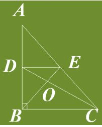
Three Statements are given below:
(I) In a, Parallelogram the angle bisectors of 2 adjacent angles enclose a right angle.
(II) The angle bisector of a Parallelogram form a Rectangle.
(III) The Triangle formed by joining the mid-points of the sides of an isosceles triangle is not necessarily an isosceles triangle. Which is True?
If APB and CQD are 2 parallel lines, then the bisectors of the angles APQ, BPQ, CQP and PQD form, square only if
If bisectors of ∠A and ∠B of a quadrilateral ABCD intersect each other at P, of ∠B and ∠C at Q, of ∠C and ∠D at R and of ∠D and ∠A at S, then PQRS is a
The Diagonals AC and BD of a Parallelogram ABCD intersect each other at the point O such that ∠DAC = 30∘ and ∠AOB = 70∘. Then, ∠DBC?
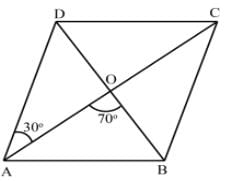
In Parallelogram ABCD, bisectors of angles A and B intersect each other at O. The measure of ∠AOB is
Three statements are given below:
(I) In a Rectangle ABCD, the diagonals AC bisects ∠A as well as ∠C.
(II) In a Square ABCD, the diagonals AC bisects ∠A as well as ∠C.
(III) In rhombus ABCD, the diagonals AC bisects ∠A as well as ∠C.
Which is True?
D and E are the mid-points of the sides AB and AC of △ABC and O is any point on the side BC, O is joined to A. If P and Q are the mid-points of OB and OC res, Then DEQP is
Given Rectangle ABCD and P, Q, R and S are the mid-points of the sides AB, BC, CD and DA res. If length of a diagonal of Rectangle is 8cm, then the quadrilateral PQRS is a

D and E are the mid-points of the sides AB and AC. Of △ABC. If BC = 5.6cm, find DE.
In a triangle P, Q and R are the mid-points of the sides BC, CA and AB res. If AC = 21cm, BC = 29cm and AB = 30cm, find the perimeter of the quadrilateral ARPQ?
Opposite angles of a Quadrilateral ABCD are equal. If AB = 4cm, find the length of CD.
In quadrilateral ABCD, ∠B = 90∘, ∠C−∠D = 60∘ and ∠A−∠C−∠D = 10∘. Find ∠A, ∠C and ∠D.
If a Quadrilateral ABCD,∠A = 90∘ and AB = BC = CD = DA, Then ABCD is a
In △ABC, EF is the line segment joining the mid-points of the sides AB and AC. BC = 7.2cm, Find EF.
In the figure, ABCD is a rhombus, whose diagonals meet at 0. Find the values of x and y.
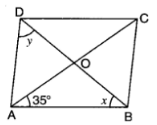
The diagonals AC and BD of a parallelogram ABCD intersect each other at the point O. If ∠DAC = 32∘ and ∠AOB = 70∘ then, ∠DBC is equal to



